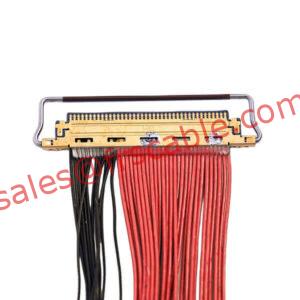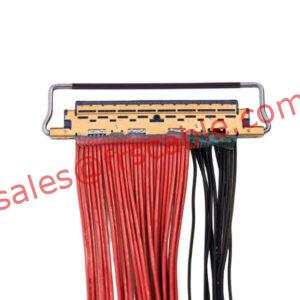Micro Coaxial Cable Harness Products
FRS is more than 20 years experient in micro-coaxial cable assemblies.
We have the ability to assmble fro 32 awg to 48 awg coaxial cable
not only single micro-coax, but also twinax and ribbon coaxial
I-PEX micro coaxial cable Assembly
KEL Board-to-Cable Micro Coaxial Cable Connector
About Micro Coaxial Cable
Micro coaxial cable, also call Micro Coax Cable, refers to a type of coaxial cable that is designed with smaller dimensions compared to traditional coaxial cables. Coaxial cables themselves are composed of several layers, including a central conductor, an insulating layer, a metallic shield, and an outer insulating layer. They are commonly used for transmitting high frequency signals and are known for their ability to carry signals with low loss and minimal interference.
In the case of micro coaxial cable, they have an outer cable diameter (O.D.) of approximately 1.0 mm or less and utilize a small-sized center conductor. The size of the center conductor is described using the AWG (American Wire Gauge) Standard, where a larger AWG number indicates a smaller size of the center conductor. The gauge of micro-coax cable is usually used from 30 AWG to 50 AWG.
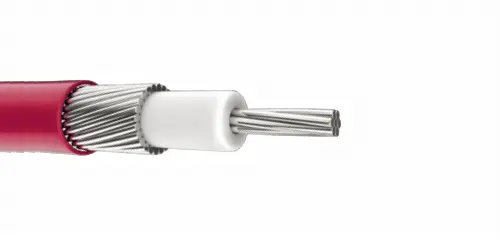
Structure of Micro Coaxial Cable
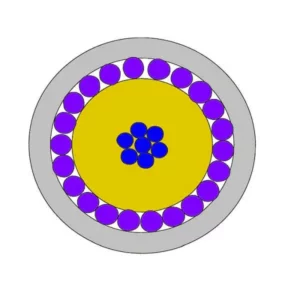
Cross Section of Micro-coaxial Cable
The unique advantage of micro coaxial cables is their suitability for applications where space and weight are critical factors. They are commonly used in industries such as electronics, telecommunications, and medical devices. Due to their small size and flexibility, micro coaxial cables are ideal for connecting components in compact electronic devices, such as smartphones, cameras, AR/VR/MR devices, drones, imaging sensors, and other portable gadgets.
Micro coaxial cables come in various configurations to meet different requirements, and they are designed to provide reliable signal transmission in environments with limited space. The specifications of micro coaxial cables may vary, including factors such as impedance, shielding, and frequency range, depending on the intended application.
Size and Dimensions
Micro Coaxial Cables are characterized by their diminutive size and precise dimensions. This makes them ideal for applications where space is limited, offering a solution without compromising on performance.
Impedance and Signal Integrity
With carefully engineered impedance characteristics, these cables uphold signal integrity, ensuring that data transmission occurs with minimal distortion. This makes Micro Coaxial Cables suitable for high-frequency applications where precision is paramount.
Applications in Various Industries
The versatility of Micro Coaxial Cables extends across diverse industries. From consumer electronics to medical devices and aerospace applications, these cables find applications where reliability and efficiency are non-negotiable.
High Transmission Efficiency
Micro Coaxial Cables boast high transmission efficiency, ensuring that signals reach their destination with minimal loss. This efficiency is crucial for industries where data integrity is critical.
Flexibility and Durability
Their inherent flexibility allows for easy installation in tight spaces. Moreover, the durable construction ensures a long lifespan, making Micro Coaxial Cables a reliable choice for demanding environments.
Enhanced Signal Quality
The advanced design of these cables contributes to enhanced signal quality, making them indispensable for applications where signal clarity is imperative.
Consumer Electronics
Micro Coaxial Cables find widespread use in consumer electronics, connecting devices with precision and reliability. From smartphones to smart TVs, these cables enable seamless communication.
Medical Devices
In the medical field, where precision is a matter of life and death, Micro Coaxial Cables facilitate the transmission of crucial data in devices such as medical imaging equipment and diagnostic tools.
Aerospace and Defense Applications
The aerospace and defense industries leverage Micro Coaxial Cables for their robustness and ability to withstand harsh conditions. They play a vital role in communication systems, navigation equipment, and more.
Considerations for Specific Applications
Selecting the right Micro Coaxial Cable involves understanding the specific requirements of the application. Factors such as frequency, impedance, and environmental conditions must be considered.
Compatibility with Devices and Systems
Ensuring compatibility with the devices and systems is crucial for seamless integration. Manufacturers provide detailed specifications to guide users in making informed choices.
As we know, single discrete wire (hookup wire) are those with a basic structure, consisting of a conductor covered with a jacket. On the other hand, mico coaxial cables possess a more complex structure, comprising a center conductor, an insulator layer, an outer conductor, and a jacket. The outer conductor of the coaxial cable acts as an electromagnetic shield, providing protection against external electromagnetic waves (electromagnetic noise), thus reducing susceptibility of the electrical signal transmitted through the center conductor.
Compare the structure of micro-coaxial cable and discrete wire
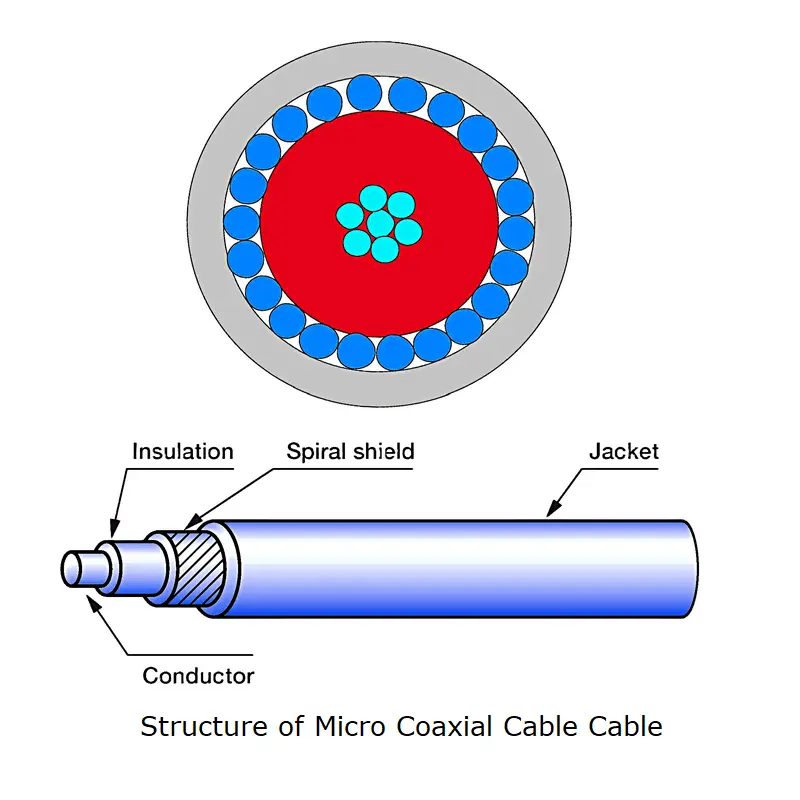
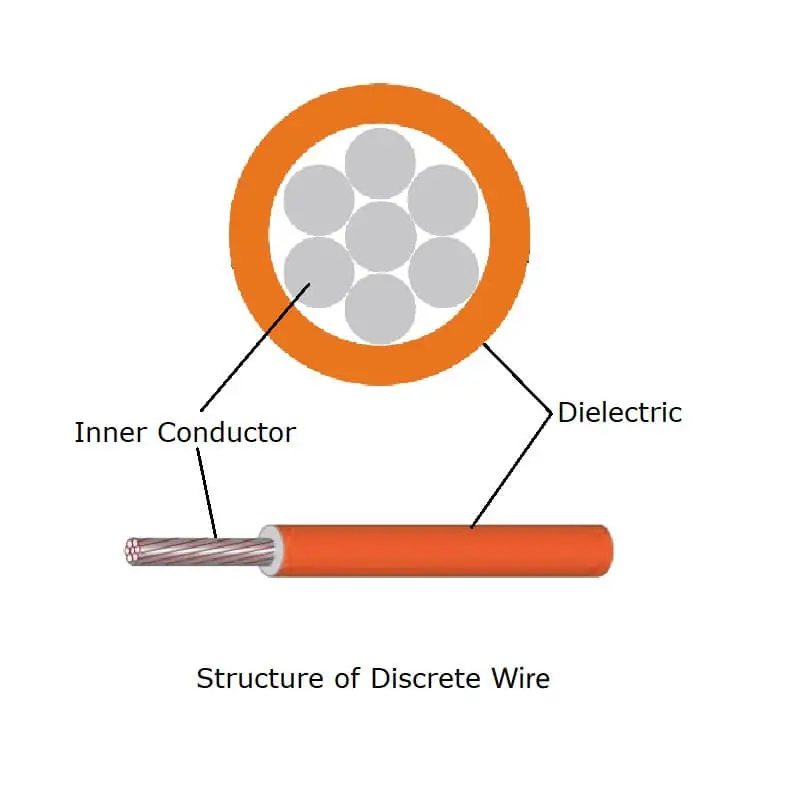
Micro coaxial cables are smaller-sized cables when compared to standard coaxial cables. They often feature reduced outer diameter and increased flexibility. These cables are designed to be compact, lightweight, and ideal for applications with limited space.
The dimensions of micro coaxial cables may include specifications such as:
- Outer Diameter (OD): Micro coaxial cables have a smaller outer diameter compared to traditional coaxial cables. The outer diameter can vary, but it is generally designed to be thin and flexible.
- Conductor Size: The central conductor, responsible for carrying the signal, is also smaller in diameter, allowing for enhanced flexibility and ease in limited space applications.
- Shielding: Micro coaxial cables may include shielding layers to protect the signal from interference. The type and coverage of shielding can vary based on the cable’s intended usage.
- Impedance: The impedance of micro coaxial cables is a crucial parameter and is often tailored to meet the requirements of specific applications. The characteristic impedance always used is 45 mhm, 50 ohm for the micro-coaxial cable.
It’s important to consider that dimensions and specifications can vary among different manufacturers and specific product lines. When selecting a micro coaxial cable, it is crucial to consider the application requirements and choose a cable that meets the necessary specifications for optimal performance.
Micro Coaxial Cable Size Table (Gauge AWG)
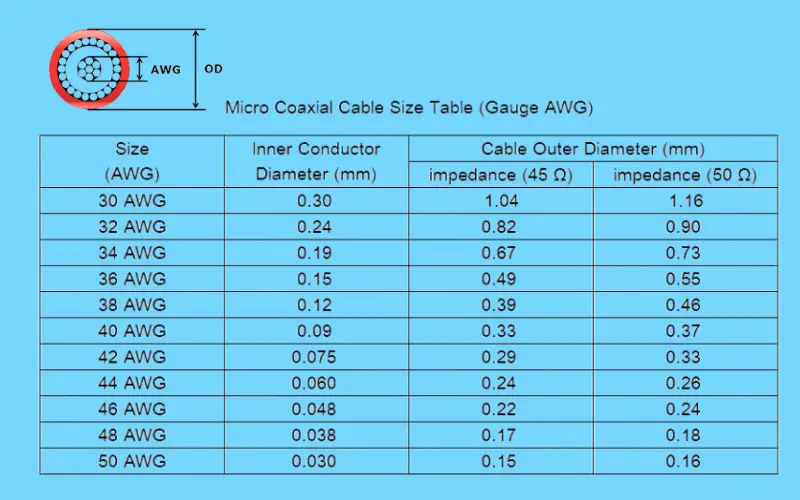
Of course, there are some special gauge, such as 41AWG, 43 AWG, and 45 AWG etc, but these are not commonly used gauges and need to be specially customized according to requirements. We can design the micro-coax cable according to the requirements and parameters of your project and also provide the final micro-coaxial cable assembly.

